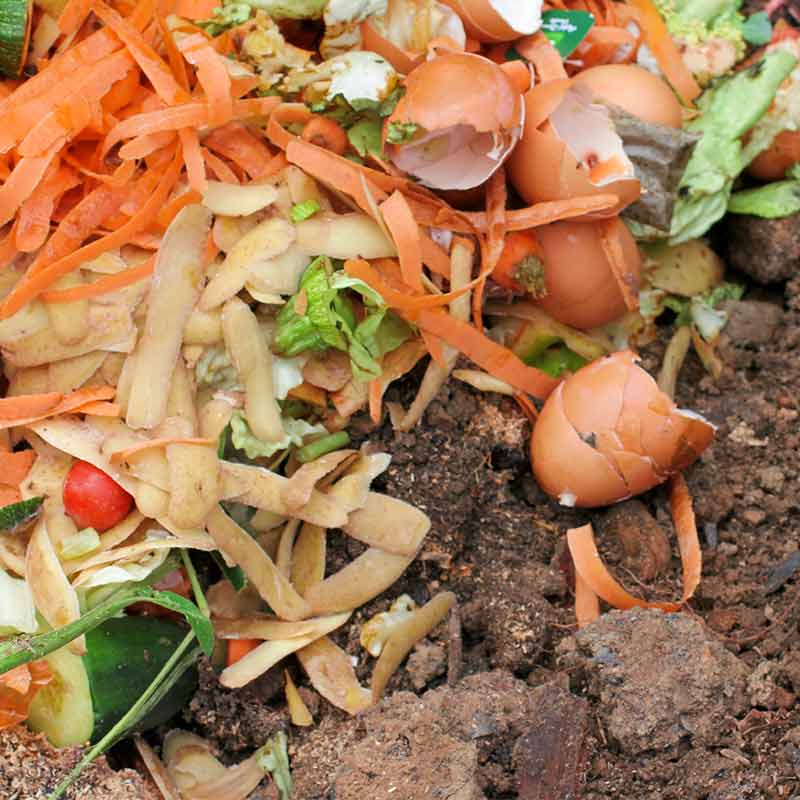Food waste 101: get informed
What is the problem?
Thanks to NRDC’s 2017 Wasted Report of food waste, we know that each year in the United States, we leave between 125 and 160 billion pounds of food uneaten, amounting to up to 40 percent of our food supply. This waste occurs throughout the food system supply chain. Food is lost on farms, during processing, distribution, and storage, in retail stores and food service operations, and finally in households.
Every time a bag of lettuce is tossed aside, much more than spoiled produce goes out the window. It’s also a waste of labor, of vehicle miles, of water, of fertilizer. We’re wasting money, valuable resources, and accelerating the changing of our climate.
Only 5 percent of food scraps are recycled, while the rest is disposed of in landfills and incinerators. Food, in fact, represents the single largest component, by weight, of municipal solid waste in landfills and incinerators in the United States.
Disposing of food scraps costs $1.3 billion annually in transport and fees. As mentioned earlier, as these scraps decompose they emit of methane, a powerful greenhouse gas.


What is the opportunity?
According to Champions 12.3, the return on investment in food loss and waste reduction for companies can be high. In The Business Case for Reducing Food Loss and Waste, Champions 12.3 analyze nearly 1,200 business sites across 17 countries and more than 700 companies, representing a range of sectors including food manufacturing, food retail (e.g., grocery stores), hospitality (e.g., hotels, leisure), and food service (e.g., canteens, restaurants). This publication is the first time these data have been made available.
Champions 12.3 found that 99 percent of the sites earned a positive return on investment. The median benefit-cost ratio — where half of the sites achieved a higher ratio while half achieved a lower ratio — was 14:1. In other words, half of the business sites earned greater than a 14-fold financial return on investment. Thus, for every $1 (or other relevant currency) invested in food loss and waste reduction, the median company site realized a $14 return. Company sites with the highest returns tended to be restaurants. Hotels, food service companies, and food retailers tended to have ratios between 5:1 and 10:1.
Below are a number of non-financial reasons to reduce food loss and waste that can be considered an important aspect of the business case for action.
Food Security
Reducing the amount of food sent to landfills across various stages of the supply chain can help increase the amount of food available for human consumption. More people thus can be fed from a given level of agricultural input, improving food security. For instance, reducing food losses during storage can increase the amount of food that farmers and communities can later eat or sell on the market — earning income that in turn can be used to buy food and other necessities. Donating unsold (yet still safe) food to charity — instead of disposing of it in landfills — can help people in need who live within a charity’s service area.
Waste Regulations
Governments and companies around the world are held to strict regulations regarding how much waste they can create. Food remains to be the single largest component, by weight, of municipal solid waste in landfills and incinerators in the U.S., thus contributing to your organization’s total waste input. Massachusetts, for example, limits companies to sending one ton of organic material per week to a solid waste disposal facility. Fines are sometimes put in place to incentivize organizations to reduce total food waste. Nonetheless, the less waste you produce, the less likely you are to fail to meet such regulations.
Environmental Sustainability
Food and the natural resources needed for its production are essential to our livelihoods. However, the additional water, land and nutrients that are exploited on food that is ultimately wasted can lead to environmental damage. Food waste sent to landfills and incinerators contribute to:
- Greenhouse gas emissions.
- Water consumption by agriculture.
- Land area needed for cultivation.
- Fertilizer and pesticide application.
- Landfill demands.
Reductions in this area can benefit public and private sector efforts to curtail climate change, conserve freshwater resources, protect biodiversity, minimize pollution, and reduce land-use pressure. Moreover, food loss and waste reduction can help governments and companies meet mandatory and/or voluntary commitments they have to these environmental issues, such as zero-waste-to-landfill commitments, the Paris Agreement on Climate Change, and the Sustainable Development Goals.
Stakeholder Relationships
Working to reduce environmental impacts, specifically through reducing food loss, across your supply chain allows for a greater development of stakeholder relations. In order to become successful in corporate sustainability, collaboration is essential. Working closely with your stakeholders to build your brand is naturally good for the longevity of your relationship.
Ethical Responsibility
Lastly, there is a strong ethical argument to be made regarding reducing waste that damages your business and the planet. It is simply the right thing to do.
What are the solutions?
Food waste is a vast and complex issue. Here are detailed industry-specific solutions to reduce food waste broken down across supply chain sectors.

What companies are leading in this space?
Businesses around the world see the financial, community and environmental benefits to reducing food loss throughout the value chain. Here are some examples of businesses leading the way:
In 2013, the USDA and EPA worked together to launch the U.S. Food Waste Challenge, a website that highlights various food waste reduction initiatives of participating organizations. While the agency hoped to reach 1,000 participants by 2020, it now has more than 4,500 businesses, schools and organizations participating.
Here is an example of food waste reduction initiatives of leading members:
Unilever will strive to reduce food loss and waste in its operations by 50% by 2030 through activities targeting the:
- prevention of food loss and waste before it arises
- recovery of wholesome, otherwise wasted food for donation, and
- recycling of food waste to other uses such as animal feed, compost, and energy generation.
Food Waste Prevention:
- 100 percent of Unilever’s U.S. factories will continue being zero waste to the landfill
- In 2015, Unilever launched Easy Out – a natural approach to getting leftover mayonnaise out of the bottle before tossing. The Easy-Out technology prevents mayonnaise from sticking to the sides of the packaging, while not impacting its flavor profile. This has reduced the average amount of leftover mayonnaise in a bottle from 13 percent to percent an equivalent to 5,000 tons of mayonnaise each year landing on a plate, rather than the landfill.
- Unilever will continue its partnership with Feed the Children and Feeding America. In 2014, Unilever donated roughly 641,114 lbs of food to Feeding America’s local subsidiaries. In 2015, Unilever donated 351,392 lbs of food products.
To learn more about how companies are tackling food waste – read more about Walmart and Kroger.